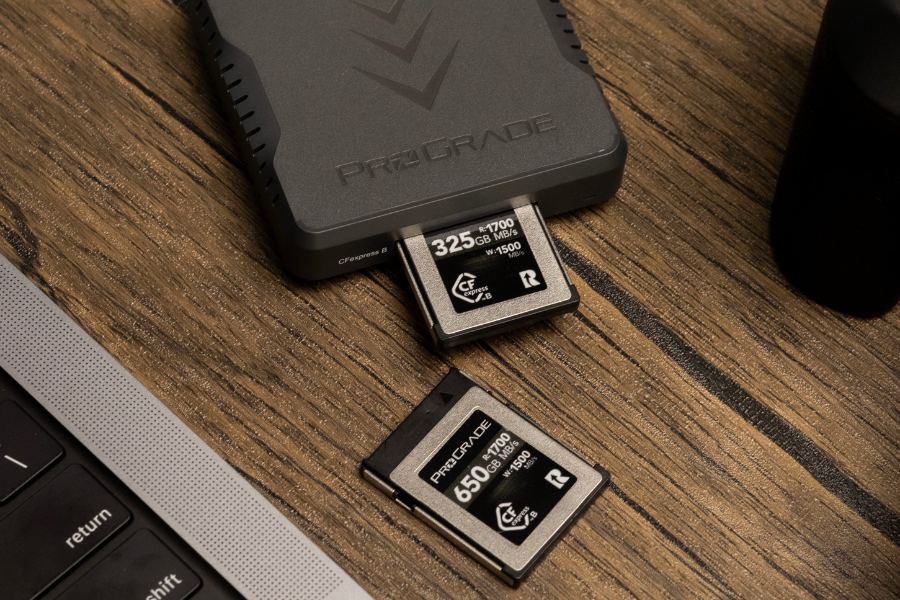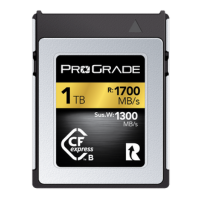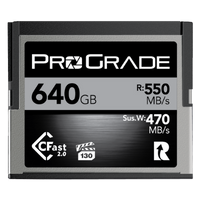Video production is not just about glamorous studios and controlled environments. Often, the most captivating footage emerges from the harshest conditions. Capturing the ethereal vastness of a scorching desert, documenting elusive creatures of our waters, or tracking a thrilling live event on ice-capped mountains will definitely take you out of your comfort zone.
One thing these scenarios, and a million more, have in common is the need for equipment that can endure these demanding video shooting conditions. And at the heart of it all is the tiny hero of your setup – the memory card.
In this guide, we’ll dive into the world of shooting video in the toughest conditions. We’ll explore the specific challenges you might face and how a memory card tailored to your needs can be the difference between a successful shoot and a missed opportunity. From harsh temperatures to extended shooting durations, we’ve got you covered. So, let’s gear up and make sure your memory card can handle the heat, the cold, and everything in between.
Harsh Conditions Defined: Navigating the Elements
Understanding harsh conditions is the first step in preparing for them. In the realm of video production, challenges often arise when the elements themselves become formidable adversaries. Videographers must be prepared to adapt to a range of severe conditions that can put their equipment to the test. The right memory card will play a vital role in ensuring your equipment performs flawlessly under these challenging circumstances and that you actually return with the captured footage. Here, we’ll outline some of the primary environmental factors that can pose challenges for videographers
1. Severe Temperatures
Shooting in frigid environments can strain your gear. Cold temperatures not only saps battery life but can affect the overall performance of your equipment. Similarly, scorching temperatures will also push your gear to its limits. Overheating can lead to equipment shutdowns.
2. Humid Conditions
High humidity levels can lead to moisture buildup in your equipment, potentially causing malfunctions. You don’t necessarily have to be in tropical or coastal areas. Moving from muggy outdoor environments into air-conditioned interiors can also result in condensation, which can be damaging to your camera and memory card.
3. Dust and Sand
Fine sand and dust particles are notorious for infiltrating camera components, including memory card slots, leading to damage or data corruption. Filming in urban settings is often enough to expose your equipment to dust and debris.
4. Water and Moisture
Videographers capturing underwater scenes or shooting in pouring rain face not only water pressure but also the risk of leaks, making it essential to have equipment that’s waterproof and corrosion-resistant.
5. Shock and Vibrations
Videographers operating in challenging conditions often encounter scenarios where their equipment is subjected to shock, vibrations, and physical jolts. This can result from various situations such as rough terrain, transportation in bumpy vehicles, or handheld shooting in dynamic environments. Memory cards exposed to these conditions must be resilient enough to withstand the vibrations and shocks without compromising their functionality or data integrity.
In the following sections, we’ll explore how to choose a memory card that can stand up to these demanding environments and keep your video shooting on track.
How to Choose a Memory Card with High Durability for Harsh Video Shooting Conditions?
When it comes to shooting in harsh conditions, the durability of your memory card is as important as the quality of your camera. A robust memory card should be designed to withstand a variety of environmental challenges. When looking for a reliable memory card, consider the following 7 key factors that contribute to a memory card’s durability.
1. Build Quality
Look for memory cards constructed with sturdy materials. High-quality cards have specifically designed exteriors that protect the delicate internal components.
2. Waterproofing
Water-resistant design is indispensable when shooting in wet or underwater conditions. Look for cards indicating their ability to withstand immersion in water.
3. Wide Temperature Resistance
Memory cards that can endure severe temperatures, both hot and cold, are essential. Check for cards with a wide operating and storage temperature range, often indicated on the packaging or manufacturer’s website. Such cards are less likely to suffer performance issues in challenging weather conditions.
4. Shockproof Design
Harsh conditions may involve rough handling, drops, or vibrations. Memory cards designed to be shockproof can withstand these physical challenges without compromising data integrity. Seek cards that are impact-resistant.
5. X-Ray Proof
If your videography takes you through airports or areas with security scanners, consider memory cards that are X-ray proof. This feature safeguards your data from potential X-ray exposure, which is common during air travel.
6. Dust-proof
A memory card with a dust-proof design ensures that the internal components are shielded from the intrusion of dust and particles, preventing potential damage or data corruption. This feature is vital for maintaining the card’s reliability during extended use in such conditions.
7. Corrosion Resistance
In humid or coastal settings, corrosion can be a significant concern. Memory cards with corrosion-resistant components ensure your data remains intact even in these conditions.
By selecting a memory card that excels in these durability factors, you can significantly reduce the risk of data loss and equipment malfunction when shooting under harsh conditions. The right memory card becomes a reliable companion in your quest to capture stunning video in challenging environments.
ProGrade Digital: A Trusted Ally in Challenging Environments
ProGrade Digital has earned its place as a reliable partner for photographers and videographers who regularly tackle the harshest shooting conditions. From rally photographer Colin McMaster shooting WRC in the blistering sun, dust clouds, thunderstorms, gale force winds, fog, plus snow and ice, to a world-renowned sports photographer Jeff Cable capturing the excitement of Olympics, to Emmy-winning Filipe DeAndrade, shooting sharks, snakes, and jaguars for National Geographic – have all chosen ProGrade Digital memory cards because of ProGrade’s commitment to providing high-quality memory cards that address the unique needs of shooting in unbearable conditions.
ProGrade Digital memory cards are designed with durability in mind, and each card is put through a rigorous testing scheme, ensuring it can withstand the harsh conditions photographers and videographers often find themselves in. This dedication to quality means you can trust these cards in the most challenging environments.
All ProGrade Digital memory cards are built to withstand shock, dust, water, and X-rays, and are designed to perform reliably in harsh temperatures. ProGrade Digital microSDXC cards, suitable for use in action cameras, can operate effectively in both freezing cold and scorching heat.
Guarding Your Data: Tips for Using Memory Cards in Harsh Conditions
When you’re investing in high-quality memory cards designed for challenging conditions, it’s essential to maintain and store them properly to ensure their longevity and protect your data. Here are 6 care tips to help safeguard your memory cards and keep them in peak condition, even in demanding environments.
1. Avoid Overheating
When your memory cards can endure severe temperatures, such as ProGrade’s CFast cards with a storage range from -40°C to +100°C, it might be tempting to underestimate the importance of temperature considerations. However, in sweltering environments, it’s important to protect your memory cards by keeping them in a cool, shaded location when they’re not actively in use. There are instances when temperatures can exceed the limits that memory cards can tolerate, potentially compromising their performance. Excessive heat can reduce a card’s lifespan, so take precautions to prevent overheating.
2. Keep Your Cards Clean and Dry
Even if your memory card is designed to be waterproof, it’s a good practice to keep them dry. After shooting in wet conditions, allow your cards to thoroughly air dry before inserting them into your camera or card reader. Similarly, before inserting or removing memory cards, make sure your hands are clean and free from dirt and oils. A quick wipe with a clean, lint-free cloth can help prevent dust and contaminants from entering the card slot.
3. Use Protective Cases
Store your memory cards in protective cases when they’re not in use. Dedicated cases help shield your cards from physical damage, dust, and moisture. In dry and dusty environments, the risk of static electricity is higher. To protect your memory cards, consider using an anti-static bag or container for storage.
4. Invest in Multiple Cards
Rather than relying on a single memory card, it’s a wise choice to invest in multiple cards. This way, you can rotate them during your shooting sessions, reducing the wear and tear on any one card in harsh conditions.
5. Safely Eject from Devices
Always follow the recommended procedures for ejecting memory cards from your devices to prevent data corruption and potential damage to the cards.
6. Regularly Back Up Your Data
Ensure that you have a reliable backup system in place for your valuable data. Regular transfer of your footage or images to a secure location is especially critical in demanding and high-risk environments to minimize the chance of data loss.
Final Words: How to Choose a Memory Card with High Durability for Harsh Video Shooting Conditions?
In the face of severe temperatures, dusty terrains, humid settings, underwater adventures, and unexpected shocks, a durable memory card is your assurance that your data remains safe, your gear performs consistently, and your creative vision is realized.
Remember, not all memory cards are created equal, and the card you select should align seamlessly with the unique challenges you’re likely to encounter in your video shoots. Go with cards known for their reliability in harsh conditions, combining advanced technology with rigorous testing to deliver a solution tailored to the needs of professionals and enthusiasts alike.
With the right memory card, you can push the boundaries of what’s possible in your video production, confidently capturing the scenes that others might miss. Your investment in durability isn’t just an investment in your equipment; it’s an investment in the stories you’ll tell and the moments you’ll preserve for generations to come.
So, as you embark on your next video shoot in a challenging environment, remember that the durability of your memory card is the silent force behind your art. Prioritize it, protect it, and watch as your creative endeavors thrive, undeterred by the harshest of conditions. Your journey to stunning, enduring footage begins with a memory card that’s as resilient as your vision.





